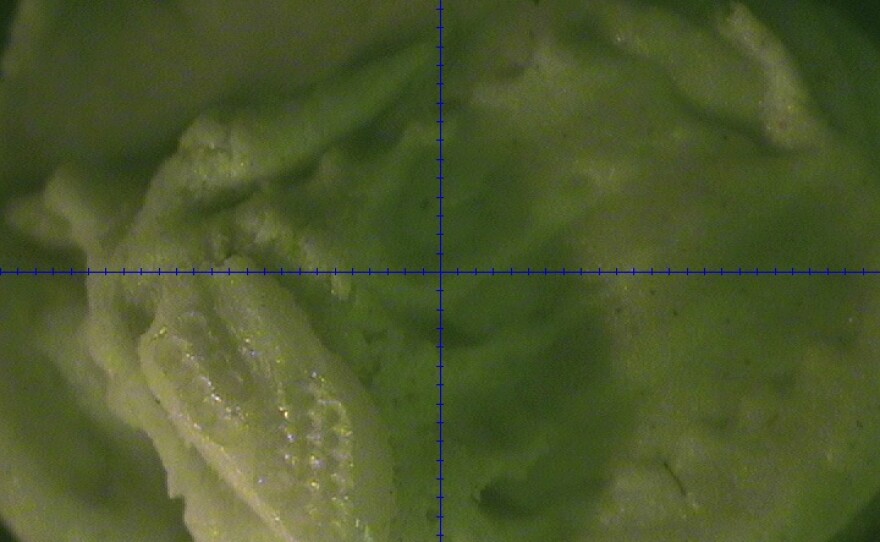Two million years ago, tree bark was a tasty treat.
That’s what the teeth from a pair of Australopithecus sediba skeletons from the Malapa site in South Africa , including Paul Sandberg, an anthropology graduate student at the .
Sandberg visited the site last year and brought back small bits of teeth to analyze in at Johns Hopkins University.
“He has which allows you to analyze very small amounts of enamel,” says Sandberg. Aimed at just a fleck of tooth, the laser vaporizes the carbon from the enamel, feeding it into a machine that can determine precise amounts of each carbon isotope.
Because different plants have different carbon isotope signatures, and the molecules in the things we eat become the very same molecules in our tissues, scientists can figure out what sorts of foods ate millions of years before.
Sandberg found that Au. sediba ate primarily C3 plants—things like shrubs or trees, including leaves, fruit and even bark.
“We certainly weren’t expecting what we got,” says Sandberg. Nearly all other hominins—including humans today—ate mostly grasses and sedges that are in a different class of plants, known as C4.
“Fruit sounds appealing to us now,” says Sandberg, “but we actually do eat a lot of grass.” Corn, the American staple, is technically a grass.
One other very early species, Ardipithecus ramidus, also ate some C3 plants, but Sandberg says Au. sediba was even more extreme.
“They are actually lower on the scale than all of the other hominins that have been measured so far,” says Sandberg.
The high-tech analysis of the kind of carbon atoms in the teeth was only one part of the study. By looking at the wear and tear on the teeth, other collaborating researchers also concluded that on average, the diet contained its fair share of rough, tough food.
A third arm of confirmation came from looking at the fossilized plant matter in the dental plaque of the teeth, also known as . Microscopic, the phytoliths found in the Malapa boy’s tartar included pieces of fruit, leaves, and wood.
“That’s actually direct evidence of what these guys are putting into their mouth and chewing,” says Sandberg.
Collectively, the data point to an unusually woody diet—and one that wasn’t for lack of other options. The region at the time had plenty of grasses available for dining. So even though both earlier and later hominins chowed down on the savanna grasses, Au. sediba looked the other way, preferring forest foods.
Sandberg notes that the study of the Au. sediba’s feeding habits won’t necessarily help scientists better understand its lineage right now, which is unclear. But once the bigger picture is sketched out, details like diet can help scientists understand why a species died out.
“Diet is something that can drive evolutionary processes," says Sandberg. "Diet is really a one of the most fundamental aspects of an animal’s ecology and adaptation.”
It is possible these two individuals are not representative of their species, so researchers will need additional skeletons to study.
“The Malapa site will definitely produce more fossils, we’re pretty confident of that,” says Sandberg. “With every new fossil, we get to re-imagine what the evolutionary relationships are… and what these animals were actually doing in their lives, how they were surviving.”
Including the chomping of bark.





